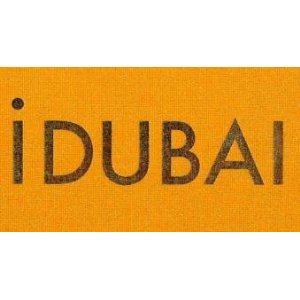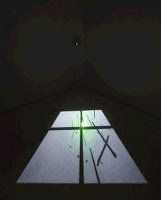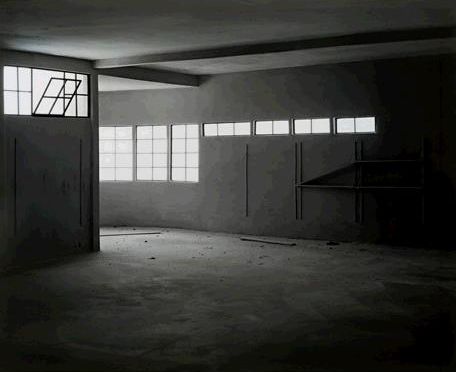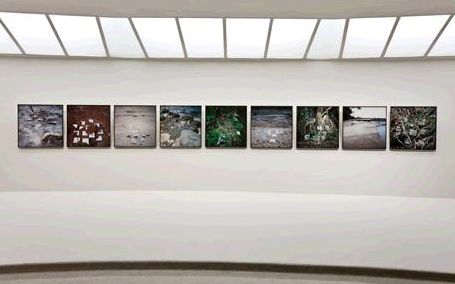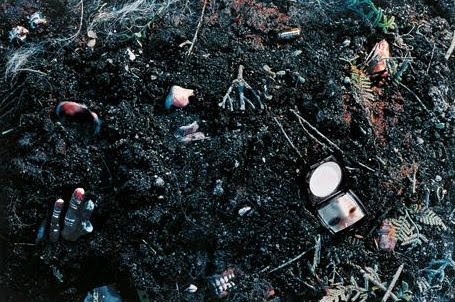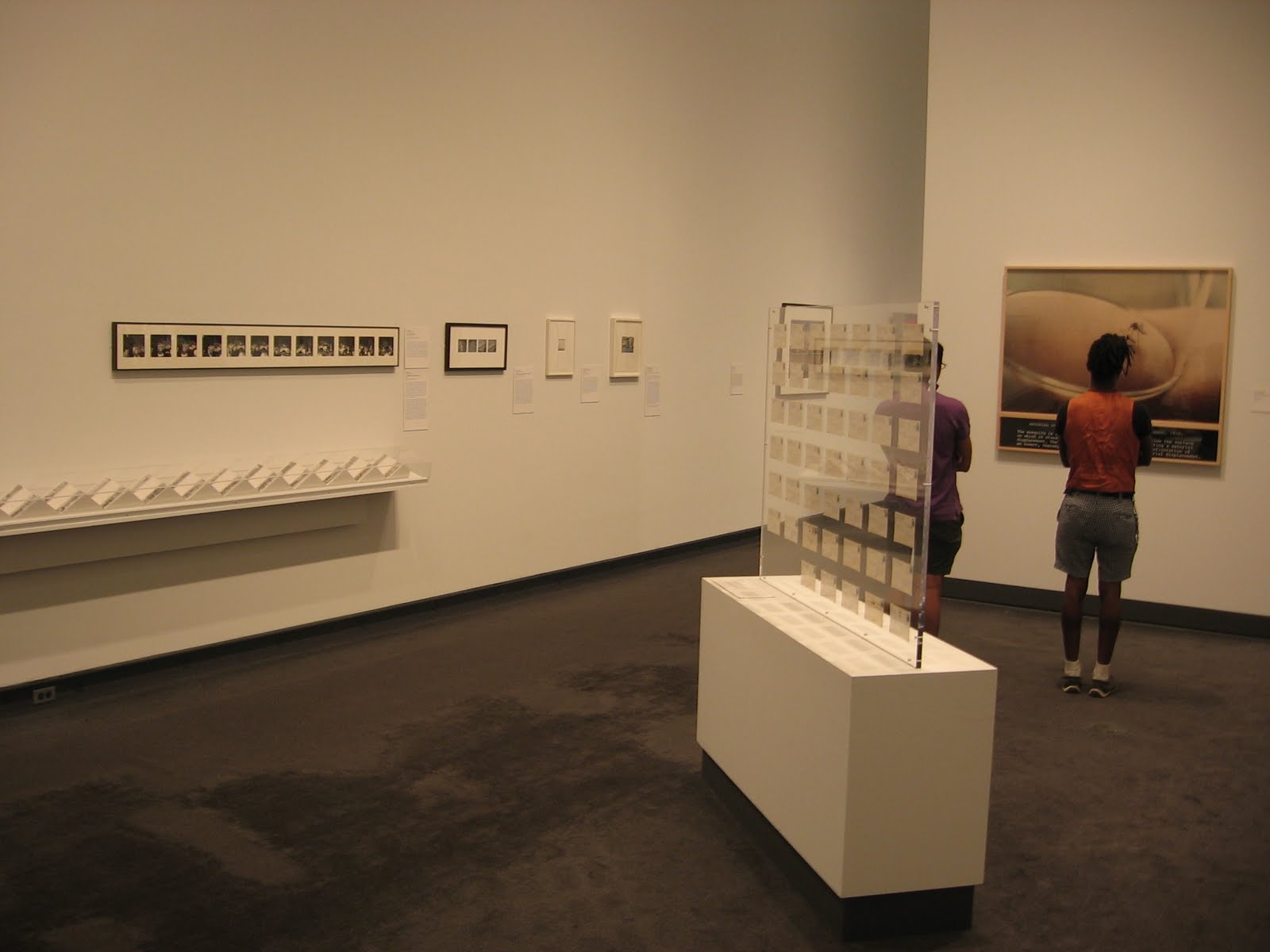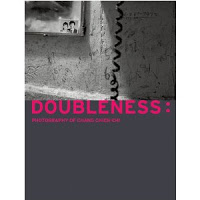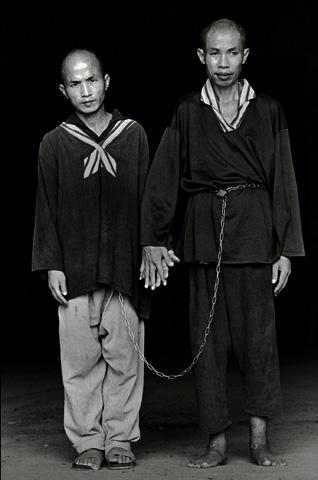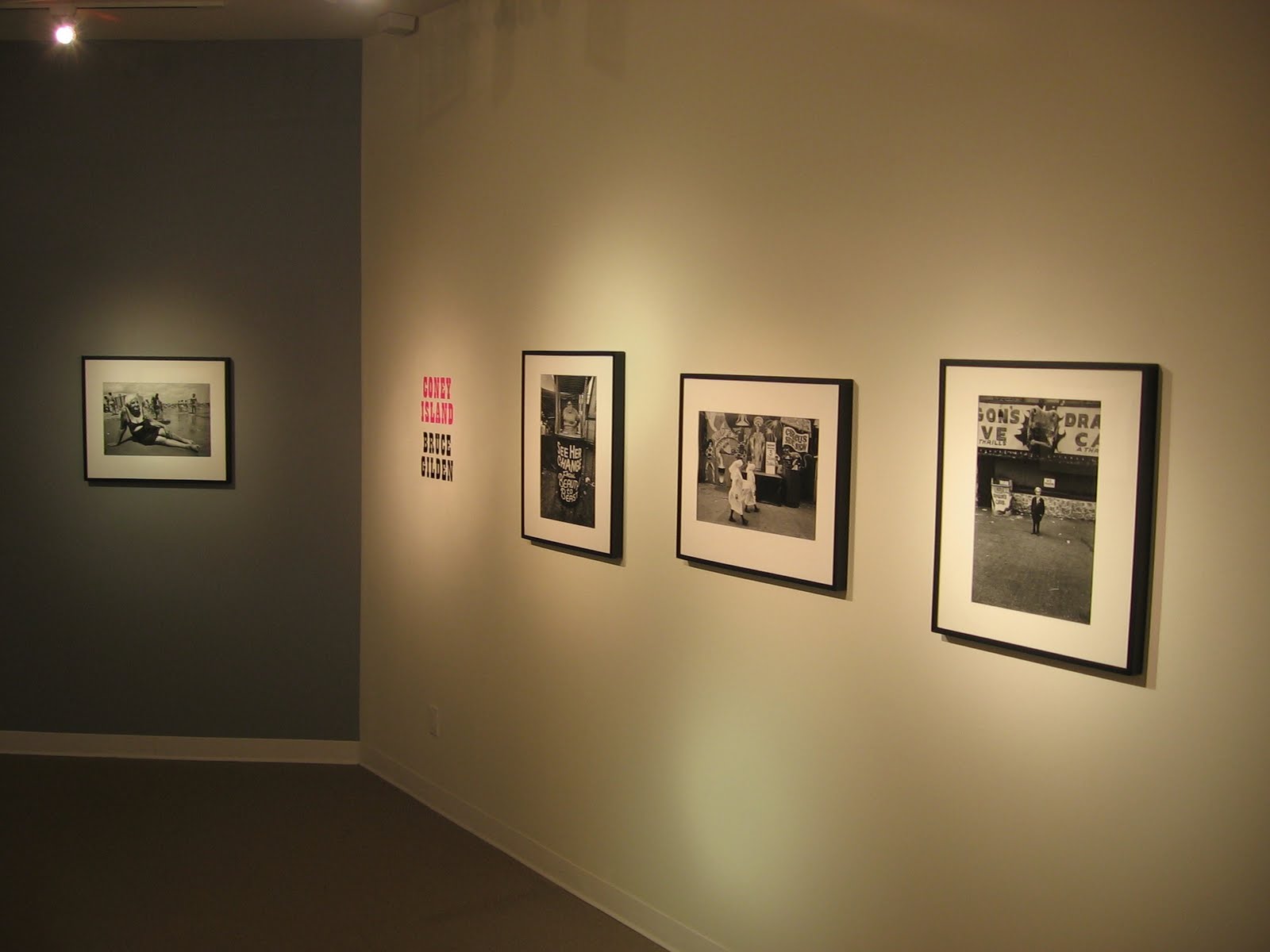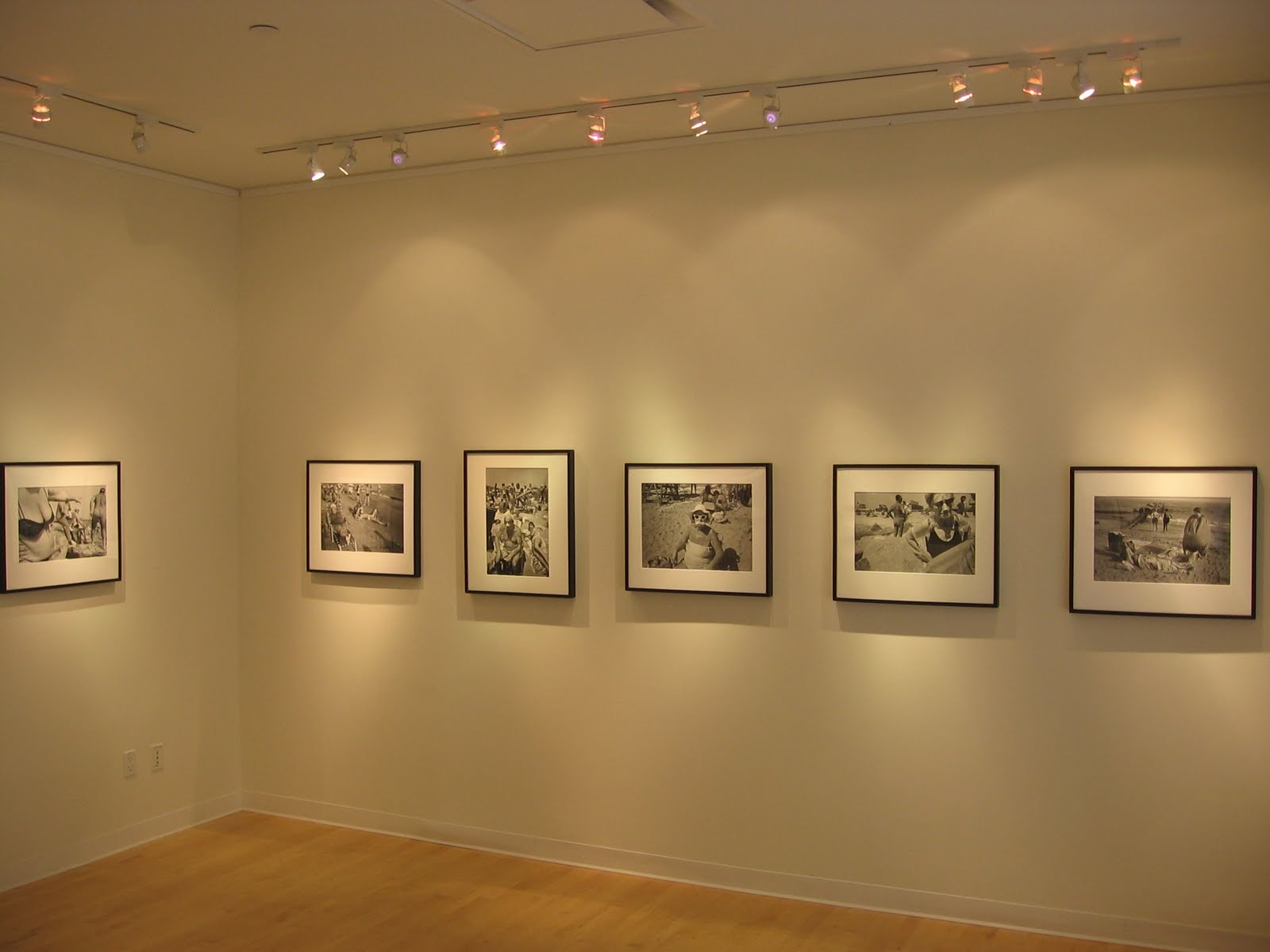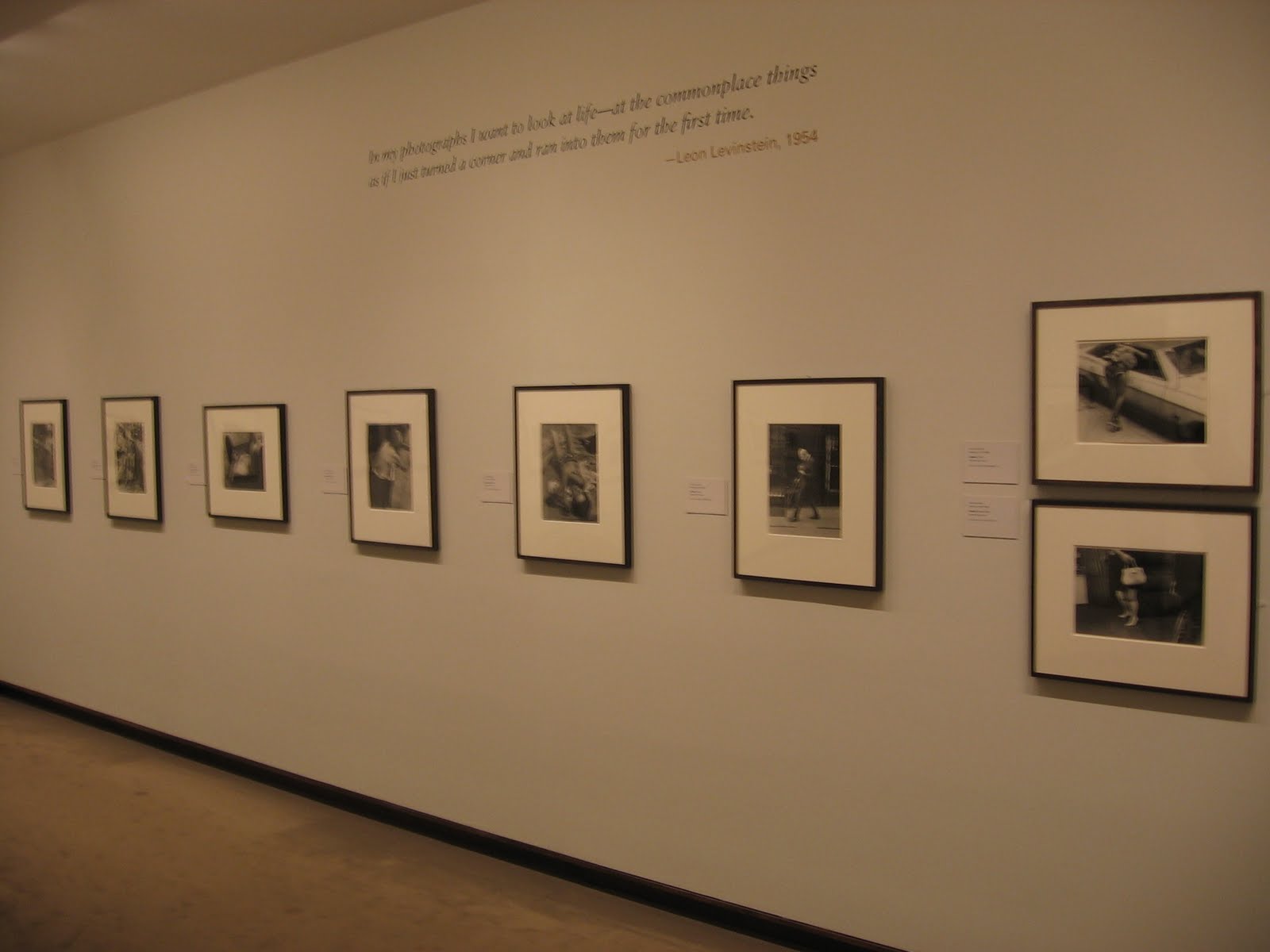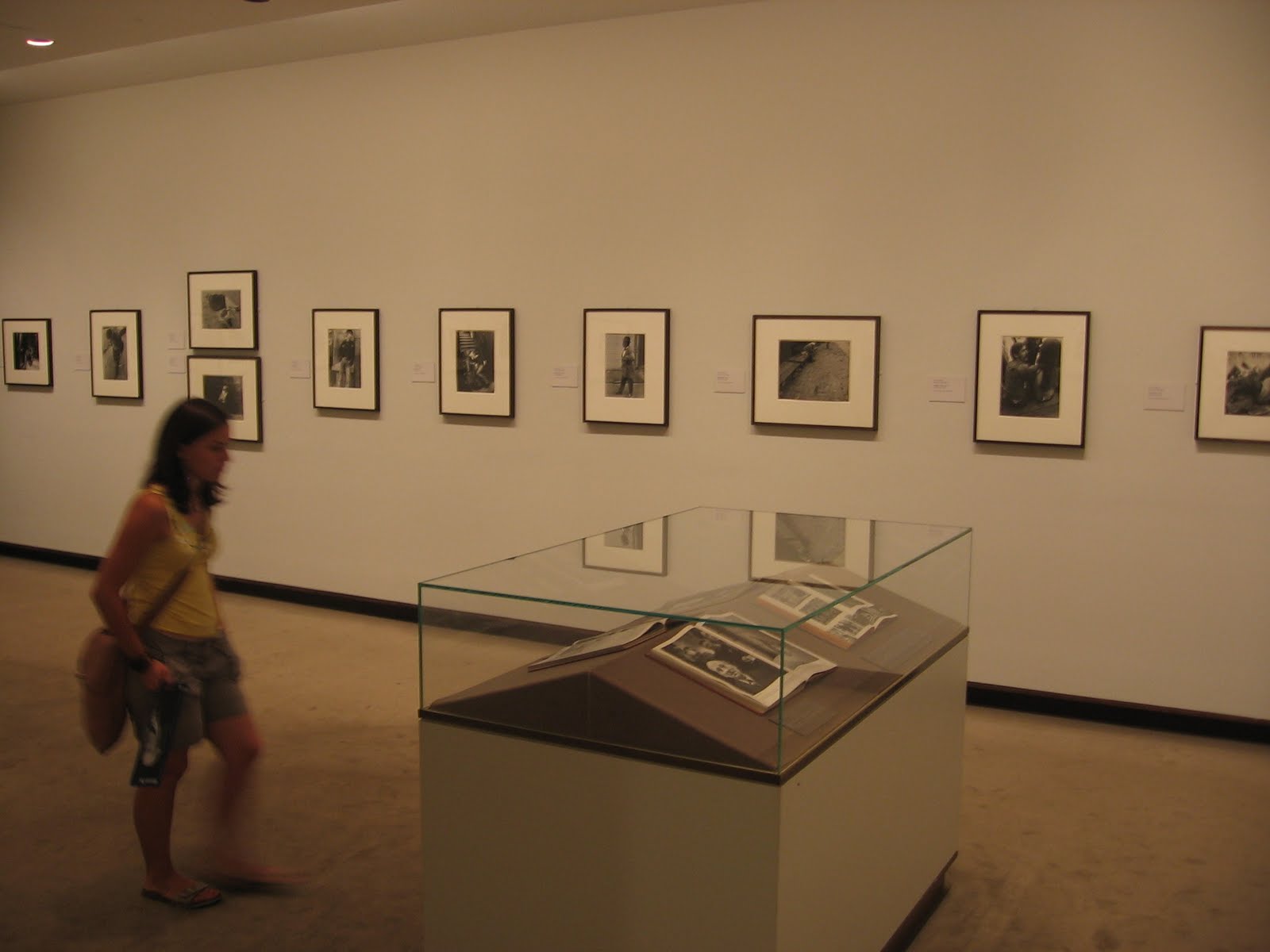 JTF (just the facts): A massive, thematic group show, displayed in a series of 8 connected rooms on the 6th floor of the museum. The exhibit includes 340 works by 110 artists and photographers, covering the period from 1839 to the present. A special exhibition website has been created (here) and a hardback catalog is available in the museum store for $55 (here). The exhibit was curated by Roxana Marcoci. Unfortunately, no photography was allowed inside the exhibit, so there are no installation shots for this show. Aside from the image at right (taken outside the exhibit itself), the single images that accompany this review were taken from the MoMA website.
JTF (just the facts): A massive, thematic group show, displayed in a series of 8 connected rooms on the 6th floor of the museum. The exhibit includes 340 works by 110 artists and photographers, covering the period from 1839 to the present. A special exhibition website has been created (here) and a hardback catalog is available in the museum store for $55 (here). The exhibit was curated by Roxana Marcoci. Unfortunately, no photography was allowed inside the exhibit, so there are no installation shots for this show. Aside from the image at right (taken outside the exhibit itself), the single images that accompany this review were taken from the MoMA website.
André Kertész (4, 1 magazine)
Stephen Thompson (1)
Edward Steichen (4)
IV. Constantin Brancusi: The Studio as Groupe Mobile
The exhibit gets off to a stumbling start with an introductory room that tries to be too clever. In what should have been a tightly edited group of 19th century works used to set the foundation for how photography and sculpture began their relationship, we instead get a puzzling juxtaposition of 19th century and contemporary works that fails to clarify the thesis to be explored. To my eye, and with the benefit of knowing what comes later in the show, the contemporary works which are interleaved with the 19th century images are those that don’t easily match any of the later themes; they are a gathering of one-offs that didn’t fit more naturally somewhere else, but were relevant or exciting enough to want to be jammed in. But put these distractions aside for a moment and focus on the 19th century works in this first room. While you might expect that the earliest photographs of sculpture would be straightforward documents, think again. From the very beginning, photographers used effects of light, scale, and composition to subtly alter the way we experience marble statues and stone busts; some grouped collections of antiquities into dense still lifes, others found drama in broken fragments or narrative in studio views.
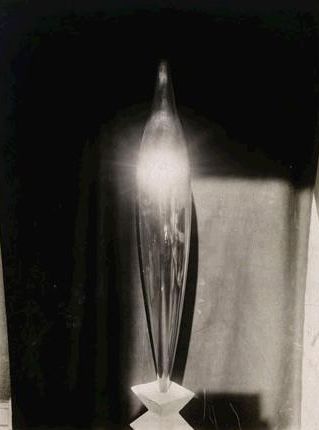 This idea of photography being used to interpret sculpture is explored expertly in the next three sections of the show. Three different sets of images by Eugène Atget show how he applied his own viewpoint in capturing the sculpture found at Versailles, Saint Cloud, Sceaux and elsewhere. He looks up at statues and frames them against dark backgrounds to create drama, he peers across formal ponds and gardens at silhouettes of tiny statues (disregarding the rigid symmetry of the architects), and he gets up close to highlight fragments of ornate door knockers and reliefs on urns. Rodin’s sculptures are interpreted in the next section, with Steichen bathing Balzac in green Pictorialist moonlight, and Druet narrowing in on gnarled, expressive hands and experimenting with time via making photographs of sculptures in various stages of completion. Perhaps the best example of interpretation comes in the section of photographs Constantin Brancusi made of his own sculpture. Brancusi clearly understood the different aesthetic options provided by photography. His images experiment with glare, reflection and blurring, and his studio is a cluttered installation of ever shifting permutations of sculpture, bases, and pedestals. All of these techniques are used in the attempt to see the sculpture in new ways, to capture alternate realities not evident in their three dimensional forms. I found these pictures to be astonishingly interesting and multi-layered, in a way that I had failed to notice before. (Constantin Brancusi, Golden Bird, c1919, at right.)
This idea of photography being used to interpret sculpture is explored expertly in the next three sections of the show. Three different sets of images by Eugène Atget show how he applied his own viewpoint in capturing the sculpture found at Versailles, Saint Cloud, Sceaux and elsewhere. He looks up at statues and frames them against dark backgrounds to create drama, he peers across formal ponds and gardens at silhouettes of tiny statues (disregarding the rigid symmetry of the architects), and he gets up close to highlight fragments of ornate door knockers and reliefs on urns. Rodin’s sculptures are interpreted in the next section, with Steichen bathing Balzac in green Pictorialist moonlight, and Druet narrowing in on gnarled, expressive hands and experimenting with time via making photographs of sculptures in various stages of completion. Perhaps the best example of interpretation comes in the section of photographs Constantin Brancusi made of his own sculpture. Brancusi clearly understood the different aesthetic options provided by photography. His images experiment with glare, reflection and blurring, and his studio is a cluttered installation of ever shifting permutations of sculpture, bases, and pedestals. All of these techniques are used in the attempt to see the sculpture in new ways, to capture alternate realities not evident in their three dimensional forms. I found these pictures to be astonishingly interesting and multi-layered, in a way that I had failed to notice before. (Constantin Brancusi, Golden Bird, c1919, at right.)Marcel Duchamp provides the next big conceptual breakthroughs, with his readymade sculptures and assemblages of random objects. While the photographs on display in the Duchamp section aren’t particularly inspiring, the ideas of making sculpture out of found objects, or of creating impermanent installations of things that then function as sculpture were groundbreaking. Suddenly, a photograph of almost anyhting could be a sculpture, and fleeting events, performances and happenings could be documented by the camera and preserved as a kind of ephemeral sculpture. These fundamental ideas would provide fodder for artists for the next few decades, and are elaborated on in several additional sections of the exhibit.
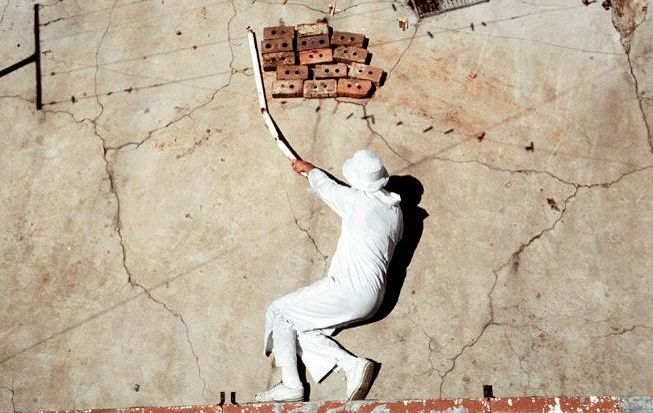 The final room of the exhibit opens up the idea of the artist’s body as living sculpture, and of the camera being a witness to performance art of various kinds. While many collectors will be more familiar with the works on display here, as they fit more neatly into the conceptual ruts of contemporary art, many seem to take on a freshness when seen from the vantage point of photography as the willing participant in the artistic process. Erwin Wurm’s one minute sculptures (pickles between toes, a chair resting on a woman’s eye), Ana Medieta’s body covered with mud or flowers, Bruce Nauman’s visual puns and Robin Rhode’s trompe l’oeil flag waving all rely on photography to help create the illusions and unexpected situations. (Robin Rhode, Stone Flag (detail), 2004, at right.)
The final room of the exhibit opens up the idea of the artist’s body as living sculpture, and of the camera being a witness to performance art of various kinds. While many collectors will be more familiar with the works on display here, as they fit more neatly into the conceptual ruts of contemporary art, many seem to take on a freshness when seen from the vantage point of photography as the willing participant in the artistic process. Erwin Wurm’s one minute sculptures (pickles between toes, a chair resting on a woman’s eye), Ana Medieta’s body covered with mud or flowers, Bruce Nauman’s visual puns and Robin Rhode’s trompe l’oeil flag waving all rely on photography to help create the illusions and unexpected situations. (Robin Rhode, Stone Flag (detail), 2004, at right.)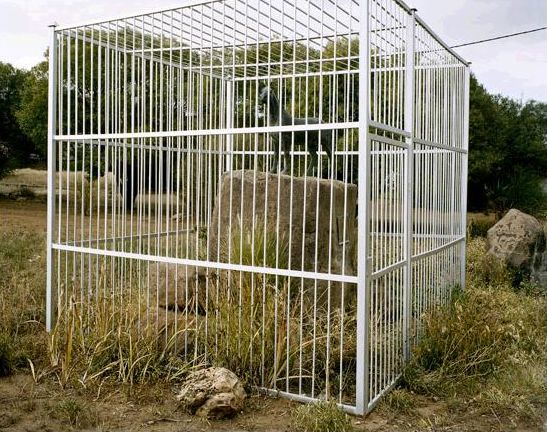 The other two sections in the show seem like tangential but relevant bolt-ons to the main line of reasoning. One centers on a specific type of sculpture, the public monument, and chronicles how artists have evolved their approaches to photographing it. The mini-thesis here is that from the very beginning photographers have been commenting on monuments via their images. The section starts with a few 19th century images, but quickly transitions to 20th century works that apply increasing levels of irreverence and irony, providing alternate contexts for what were supposed to be heroic or ideal symbols. Igor Mouhkin finds a Russian worker statue in an overgrown alley, Robert Frank silhouettes St. Francis in front of a gas station, Henri Cartier-Bresson captures tourists pulling on Abraham Lincoln’s nose, and a series of Lee Friedlanders juxtapose monuments and memorials with beer cars, a lost dog sign, and the chaos of Times Square. David Goldblatt and Guy Tillim provide a more caustic edge, with Nelson Mandela dwarfed by construction scaffolding, and Henry Stanley toppled over and broken off at the feet. In the end, Ai Weiwei gives San Marco square in Venice the finger. (David Goldblatt, Monument Honouring the Contribution of the Horse to South African History, 2005, at right.) The other section loosely connected to the main line of thinking covers a grab bag of mannequins, dolls, figurines and puppets, mixed together with collage and photomontage effects. These pictures draw on themes from other sections: found objects as sculpture, the staging of imagery just for the camera, and the mixing of photography and sculpture to create alternate artistic options.
The other two sections in the show seem like tangential but relevant bolt-ons to the main line of reasoning. One centers on a specific type of sculpture, the public monument, and chronicles how artists have evolved their approaches to photographing it. The mini-thesis here is that from the very beginning photographers have been commenting on monuments via their images. The section starts with a few 19th century images, but quickly transitions to 20th century works that apply increasing levels of irreverence and irony, providing alternate contexts for what were supposed to be heroic or ideal symbols. Igor Mouhkin finds a Russian worker statue in an overgrown alley, Robert Frank silhouettes St. Francis in front of a gas station, Henri Cartier-Bresson captures tourists pulling on Abraham Lincoln’s nose, and a series of Lee Friedlanders juxtapose monuments and memorials with beer cars, a lost dog sign, and the chaos of Times Square. David Goldblatt and Guy Tillim provide a more caustic edge, with Nelson Mandela dwarfed by construction scaffolding, and Henry Stanley toppled over and broken off at the feet. In the end, Ai Weiwei gives San Marco square in Venice the finger. (David Goldblatt, Monument Honouring the Contribution of the Horse to South African History, 2005, at right.) The other section loosely connected to the main line of thinking covers a grab bag of mannequins, dolls, figurines and puppets, mixed together with collage and photomontage effects. These pictures draw on themes from other sections: found objects as sculpture, the staging of imagery just for the camera, and the mixing of photography and sculpture to create alternate artistic options.
The show ends on a rather abrupt note, and left me wondering why a bridge to the future was left unbuilt. Where are the mixed media digital mashups, the computer generated forms, and the algortihms or executables as sculpture? A final small room of wild, unruly hybrids and flights of fresh fancy would have made the case that the disciplines of photography and sculpture will be inextricably intermingled on a going forward basis, evolving in directions we haven’t yet begun to understand.Overall, I found Marcoci’s conceptual argument well-reasoned and thoughtful, with illuminating examples to be found in nearly every section. While I might quibble with a few of the choices here or there, in general, this exhibit successfully delivers a new perspective on the role of photography in the larger artistic discussion and convincingly proves that sculpture and photography have had a long history of co-dependence. It’s a challenging, intellectual approach that expects some active engagement by the viewer and rewards this time spent with some simple, but powerful ideas. So in the dog days of summer, go and engage your brain, and whatever you do, don’t miss the Brancusis.
Collector’s POV: This kind of a broad museum survey, heavy on scholarly argument, isn’t a great place for a discussion of gallery/auction prices or market dynamics. So we’ve highlighted a few favorites, but dispensed with the usual discussion of pricing trends.Rating: *** (three stars) EXCELLENT (rating system described here)


